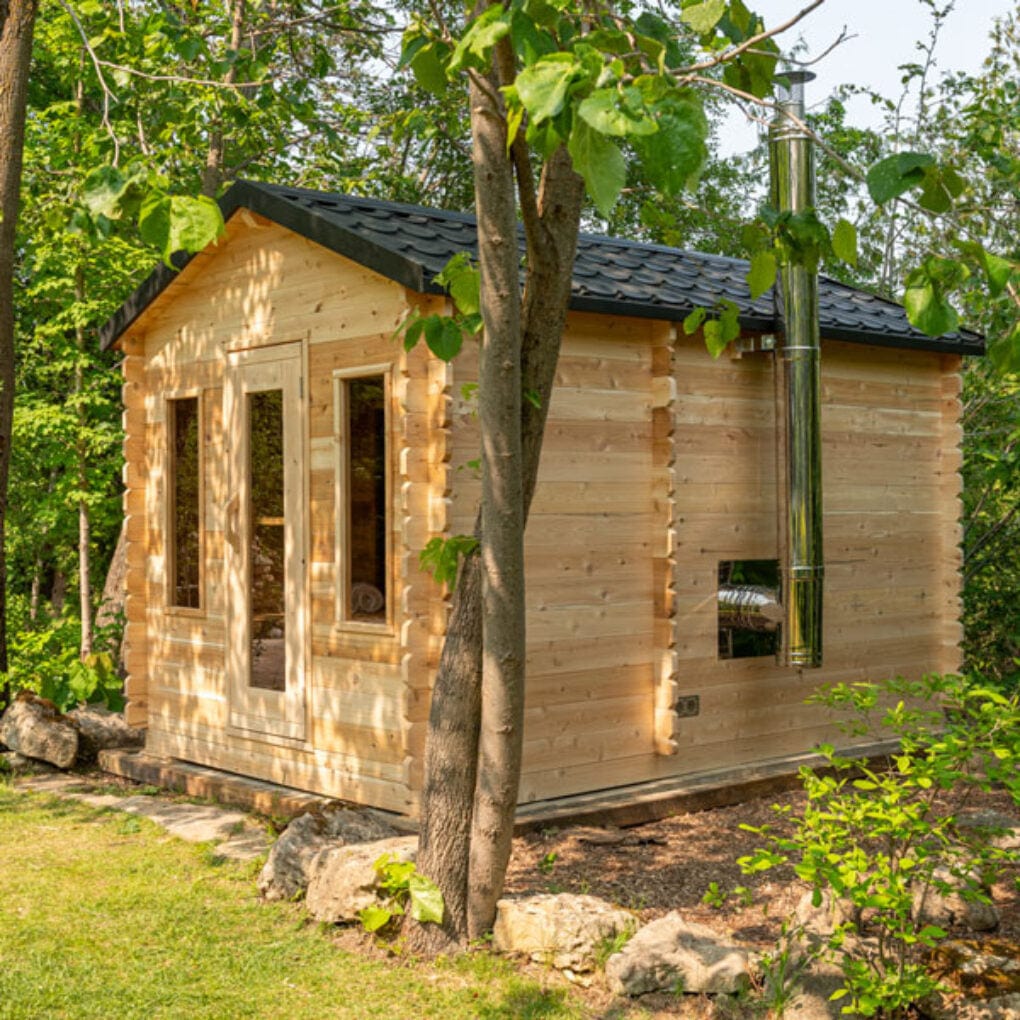The Traditional Sauna Statements
The Traditional Sauna Statements
Blog Article
The Basic Principles Of Traditional Sauna
Table of ContentsTraditional Sauna for BeginnersThe Traditional Sauna DiariesSome Known Facts About Traditional Sauna.Examine This Report on Traditional Sauna
The majority of the weight shed in a sauna is water loss and is re-gained upon rehydrating. Nonetheless, certainly sauna can be an essential component of a healthy weight management program. To take a look at the differences in between standard and IR saunas, I will certainly divide these into verifiable, academic, and made distinctions.Therefore, the hottest point in the saunawhich goes to the ceiling straight over the sauna heateris normally between 185 and 190 F. Traditional Sauna. Claims that a traditional sauna exceeds 200 F is just not true and not relevant for electrical saunas marketed in the United States. The temperature for a far-infrared sauna is usually set in between 120 and 140 F; nonetheless, unlike the standard sauna, the objective in and IR space is not to accomplish a high temperature
Due to this, the temperature difference is virtually pointless, because excessive sweating leads to both sauna types, yet the technique of heating the body is various. In an IR sauna the bather will really feel hot and will certainly sweat a lot, however at much reduced temperatures. Hence, if the objective is to spend longer amount of times in the sauna, the IR sauna is a good choice.

Facts About Traditional Sauna Revealed
When the high temperature level is achieved, the elements cycle on and off to keep the heat. Many standard sauna users delight in pouring water over the rocks to create vapor to increase sauna humidity levels. The advantages of putting water over the rocks include: making the space a lot more comfy, moistening the nasal flows, and enabling the use of aromatherapy by mixing necessary oils with the water.
In a far-infrared sauna, the warm waves pass through the body to properly warm the body and raise the body core temperature. To achieve this enhanced temperature, Far-infrared emitters create infrared power which is close to the exact same wavelength as that which the body normally emitsoften referred to as the "Important Variety" of 7 to 14 microns), so the power is well gotten by the body.
When the energy enters the body, it causes the body temperature level to increase and ultimately causes sweat. In an infrared sauna it is necessary for the emitters/heaters to remain on practically continuously. Considering that there is no mass of rocks to keep warmth, the sauna will certainly cool down if the emitters turned off.
As mentioned over, the sauna bather in an infrared space intends to place himself before running emitters to obtain maximum advantage from the warm. The heating time for both areas can be extremely different, depending on exactly how the rooms are utilized. For a standard sauna, a bather ought to why not look here allow 30-40 minutes for the area to accomplish a desired temperature level and to properly pre-heat the rocks.
The Ultimate Guide To Traditional Sauna
A well constructed sauna will normally achieve a temperature of 150-160 F in regarding 30-40 minutes. For hotter temperature levels, the area might need to warm for a longer duration.
To some, 15 mins was "thrown away" while the infrared power heated the wood panels instead of warming a body, while others locate a pre-heated space to be more comfortable and believe an elevated starting temperature is required to begin sweating. The length of suggested usage for each and every area is approximately the same (10-15 mins per session); however, due to the lower air temperatures and the capability to really feel the results of infrared warmth much faster than a traditional sauna, it is not unusual for an individual to spend a total of 20-30 minutes in an infrared sauna.
Typical saunas tend to be larger (hence make use of even more power) than infrared saunas, although traditional saunas are certainly readily available in one and 2 individual sizes as well. For a two-person typical sauna, 5x6 or 5x7 size is most popular. The top bench can conveniently seat two or three people and is additionally enough time to rest throughout the sauna session.


The ordinary expense per kWH of electrical power in the united state is roughly $0.11, so a 4.5 kW heating system will cost approximately $.50 to compete one hour, if the heater runs constantly for one hour. Typically a sauna heating unit will certainly compete 75% of the very first hour and 50% why not try here of subsequent hours on considering that the elements cycle once the set temperature level is achieved.
All About Traditional Sauna
A 2 individual far-infrared room is normally physically smaller sized than a typical sauna, commonly about 4' x 4' or smaller. The IR heater is normally 1.5-1.7 kW using a 120 volt 15 amp plug-in service. Given that the space can be utilized earlier than a sauna area, we will presume the space is used for to of an hour consisting of warmth up time.
Finally, there is a hardly ever talked about site distinction in the social experience between both spaces. While our society has actually lost several of the social advantage of the traditional sauna experience, it can be extremely socially satisfying. From family members time in the sauna, to heart-felt discussions with significant others, to sauna partiesthe standard sauna experience can lead to intimate socializing.
A lot of higher end infrared areas consist of colored light therapy, audio systems and full-glass fronts.
Report this page